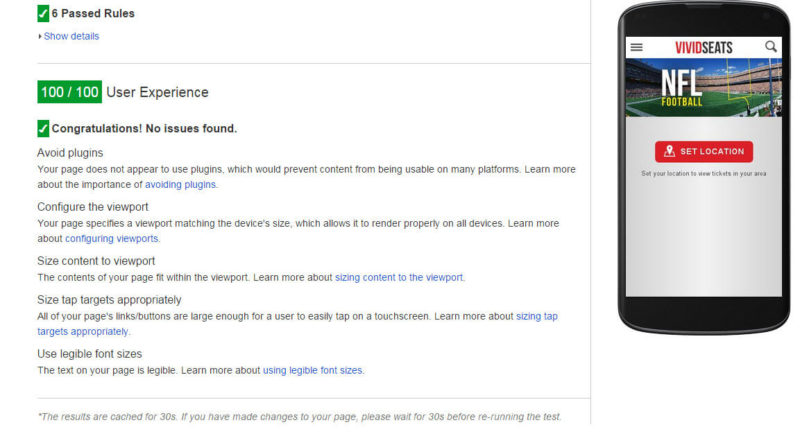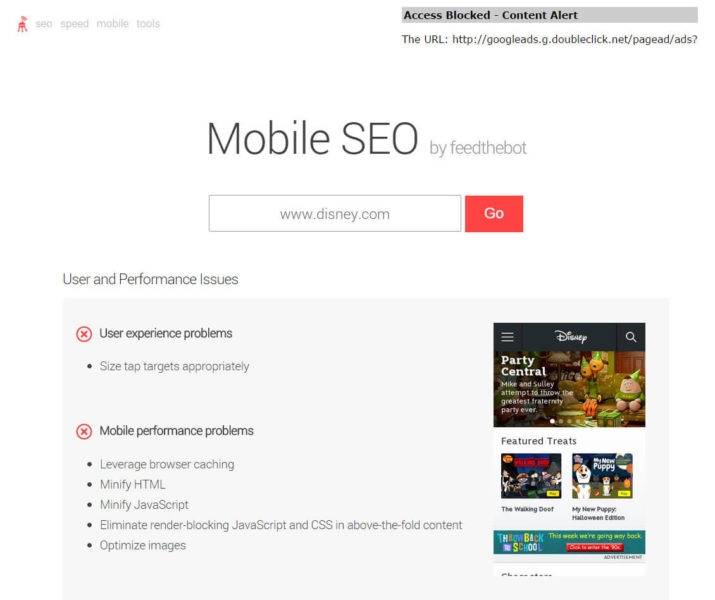Beat Google’s Mobile Experience Algo (And Help Mobile Searchers) With These Two Tools
Columnist Bryson Meunier notes that Google will soon consider mobile user experience as a ranking factor. Use these tools to prepare your site!
Over the years, we’ve seen Google focus quite a bit on mobile user experience.
The search giant treats mobile searchers differently, serving them different search results in many cases. It has worked to help webmasters create better user experiences for mobile searchers by issuing smartphone guidelines and announcing ranking changes for common mobile search problems.
The search giant even began testing “non-mobile friendly” icons within its mobile search results recently in an effort to dissuade users from visiting sites that aren’t mobile friendly.
Now, it is rumored that Google will soon be incorporating mobile user experience into its ranking algorithm — meaning that sites which don’t work well on mobile devices may soon incur ranking penalties in search results. As far as I know, this is the first move in which making a mobile searcher pinch and zoom could put sites at a disadvantage over sites that don’t.
Are you ready for the change?
Keep in mind, the details of the change haven’t been announced yet, as Google has only hinted that such a change will happen in the near future. But if you run your site through the two tools below, you’ll have a better chance of avoiding any fallout from the change than your competitors that don’t.
1. Google’s PageSpeed Insights Tool
Google has already said that if your site doesn’t load quickly on mobile devices, it might adjust its rankings to demote your page. However, the PageSpeed insights tool is about more than just speed.
Recently, Google updated the tool to provide insight into five new User Experience rules that, if I were a betting man, I would say are part of the upcoming mobile user experience algorithm. The recommendations are as follows:
- Avoid plugins
- Configure the viewport
- Size content to viewport
- Size tap targets appropriately
- Use legible font sizes
You can test your site for all five of these mobile usability factors now in PageSpeed Insights. The tool also gives you more details on why each is important for mobile users, and how to fix them if necessary.
2. Feedthebot’s Mobile SEO Tool
For a more thorough analysis of potential issues with your mobile user experience, consider Feedthebot’s Mobile SEO tool.
This tool checks your mobile site configuration to ensure that it’s compliant with Google’s webmaster guidelines and not making any of the common mobile configuration errors that Google has told us to avoid.
The above tool will ensure you’re not blocking your mobile content from search engine crawlers. It will check canonical tags for bidirectional annotations for mobile sites, check for a vary header for dynamically served sites, and look for media queries for responsive sites.
Final Thoughts
If you’ve used both of those tools and fixed what you found, you most likely have nothing to worry about when the mobile user experience algorithm goes live — not to mention, you’ll have made your site more usable for searchers and will probably get more revenue as a result.
So, why were you putting this off, again?
No matter. There’s no more time to wait. You’re too late to be ahead of the game, but using these tools right now will at least help you not lose any more money to a poor mobile user experience.
If you’re an overachiever, check out these great resources from Google on how to make your mobile user experience shine:
Contributing authors are invited to create content for Search Engine Land and are chosen for their expertise and contribution to the search community. Our contributors work under the oversight of the editorial staff and contributions are checked for quality and relevance to our readers. The opinions they express are their own.
Related stories
New on Search Engine Land


